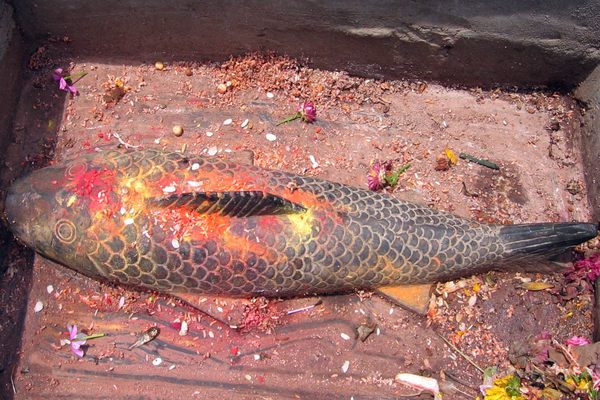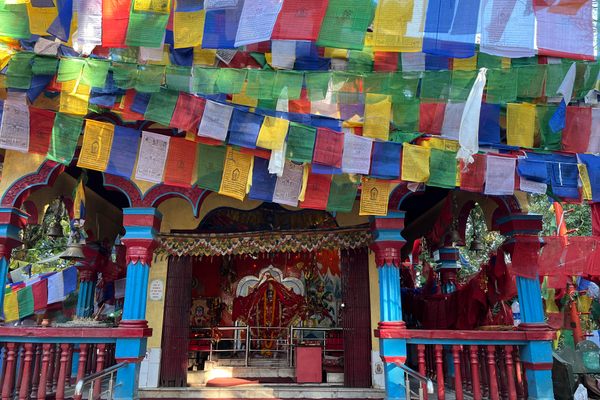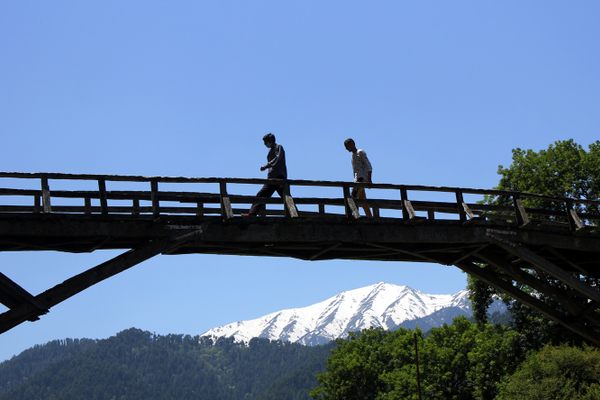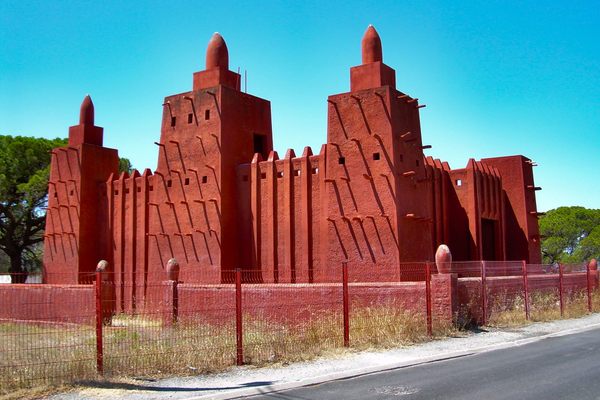Maitighar Mandala
Hiding in plain sight near Kathmandu’s government center is a giant mandala that has become a locus for political protest.
Hiding in plain sight near Kathmandu’s government center is a giant mandala that has become a central location for political protest.
Every day, thousands of commuters drive past an outsized tribute to Nepal’s rich Buddhist heritage. Lying in a traffic circle near Singha Durbar, the Nepali government palace, the recessed mandala is difficult to observe from street level while trying to negotiate the heavy traffic. However, it has played a central role in the civic life of the city.
Constructed in 2001, the mandala was part of a larger Kathmandu beautification project inaugurated prior to the 11th South Asian Association for Regional Cooperation summit. Measuring approximately 50’ x 50’, the mandala’s design has a series of concentric circles inscribed within a square. It features images of vajras, a ritual weapon symbolizing the power of a thunderbolt, and lotus petals which symbolize purity. The name Maitighar translates to “maternal home,” and derives from a famous movie of the same name that played at a theater that once stood on the same spot.
Due to its proximity to many government buildings, Maitighar Mandala has been the site of numerous protests, especially during the civil war and Maoist insurgency. Other important civic events have been held here including in 2017, when KP Sharma Oli, who was later elected prime minister, hosted the Nepal Patriotic Youth Society. At that event, the largest Nepali flag ever made was raised. The flag measured 32 feet (10 meters) tall and weighed more than 17 pounds (8 kilograms).
In 2018, the government prohibited gatherings at the mandala ostensibly because such events interfered with traffic. Nevertheless, demonstrations and other events have continued.
The term “mandala” is simply the Sanskrit word for “circle,” and they are used both for teaching and healing. Although they are originally Buddhist in origin, mandalas are also used by Hindus and Jains for meditation. Mandala designs can be deeply intricate and complex, but generally describe the cycles of life and one’s journey through the universe.
Know Before You Go
The Maitighar Mandala is located in a traffic island at the intersection of Thapathali, New Baneshwor, and Bhadrakali roads at the southeast corner of Singha Durbar.
















Follow us on Twitter to get the latest on the world's hidden wonders.
Like us on Facebook to get the latest on the world's hidden wonders.
Follow us on Twitter Like us on Facebook